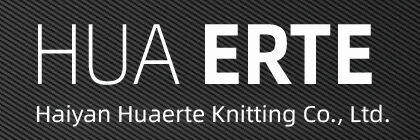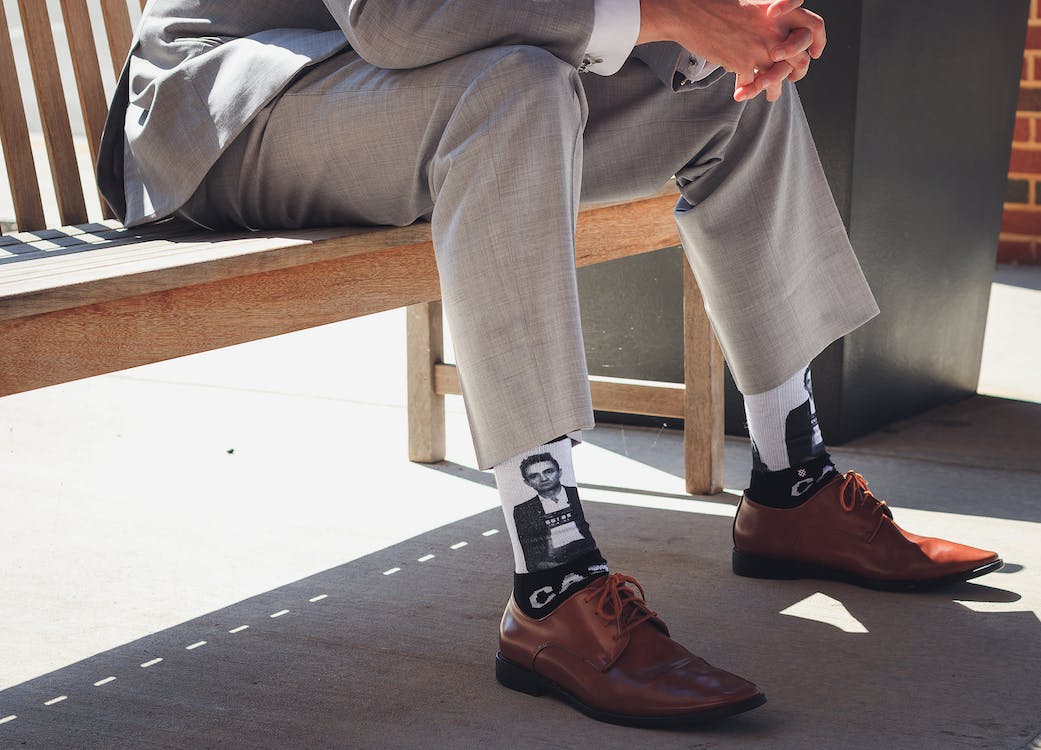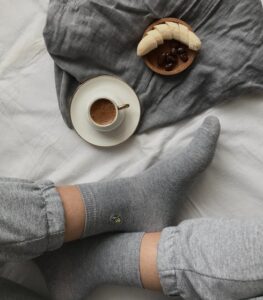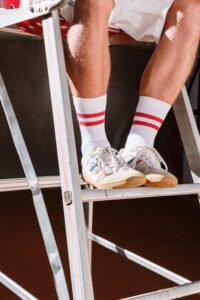A pair of socks with different styles and colors need different designs. At this time, the process of socks processing and customization is needed. The design of socks belongs to graphic design, and the format used is designer format. It uses no grid to form the overall pattern, the current design has been replaced by computers. The principle of the design program is: the computer design of the pattern code into the sock machine identification code, by the needle selector jacquard leaf control needle, to achieve the purpose of jacquard. Common patterns are symmetrical, asymmetrical, and asymmetrical.
The socks processing and customization process is mainly divided into the following processes:
Step 1: Only select the right material, can produce good socks.
With the progress of science and technology and the improvement of living standards, the material of socks is also increasing, such as natural fiber (cotton, hemp, wool, silk), regenerative fiber (tencel, modal, bamboo fiber, soybean fiber, pearl fiber, milk fiber, etc.). People are paying more attention to comfort and health rather than just clothes.
Socks are mainly composed of three aspects:
Materials: Various fibers (natural, synthetic, and recycled) form the basic structure of socks.
Secondary material: Elastic fiber, can make the socks shrink, close to the foot, prevent sliding.
Accessories: Rubber band, which can shrink the sock mouth and prevent the sock mouth from falling off.
Jacquard thread, making a variety of fine patterns, mainly made of high elastic, nylon and cotton yarn.
Image: Just like building a house, the main material is the frame of the house, the auxiliary material is the wall of the house, the auxiliary material is the decoration of the house.
Step 2: Weave. Once you’ve chosen your material, it’s time to weave.
The new socks are cylindrical and round, similar to the sweaters my mother knitted when I was a child. The thread is wound continuously to form a long cylinder. One end is the top of the sock (with a rubber band) and the other end is the top of the sock (the finished product is sewn and worn on the toe). The workers turned the front of the sock inside out, ready for the next step of sewing.
It takes more than good machinery to make good socks. You have to have equally good operators. A good hosiery machine operator must go through three months of skills training before the internship, another three months with the help of a teacher before formal solo operation. Only after 1-2 years of constant familiarity and experience accumulation, can be called a good operator. Excellent operators can not only save energy for the company, more importantly, in the daily operation can timely adjust the process, check the quality of products, to avoid unqualified products flow to the next link.
Step 3: Sew. After the cylindrical socks flow to the sewing link, according to the sewing requirements of the product can be divided into manual eye sewing and machine sewing.
Hand sewing, also known as boneless sewing, is to sew the toe of the sock on a disc-shaped needle plate by hand, requiring one stitch per eye, one stitch per stitch, without dislocation.
Pros: No joint toe, smooth and comfortable to wear.
Disadvantages: Low capacity, slightly higher cost, scale production takes a long time.
A sewing machine is a manual way of conveying the toe part to be sewn to the machine entrance for direct sewing through the machine.
Advantages: Sewing speed, suitable for mass production, short time to finish.
Disadvantages: Can not achieve the effect of pure hand sewing. Toe part has joint, hand sewing is not smooth, it is likely to rub the foot.
The fourth step: inspection as the name implies, is to check the quality of the socks is qualified.

Lorem ipsum dolor sit amet, consectetur adipiscing elit. Ut elit tellus, luctus nec ullamcorper mattis, pulvinar dapibus leo.It is reasonable to opt for a thorough professional examination after suturing. Because after the sewing process, there will be few defective products in the subsequent process, which can be detected in the packaging process; But knitting and sewing links are prone to unqualified products. Therefore, by setting the inspection link after the sewing link, the qualified rate of the product can be improved and the production capacity waste in the subsequent link can be reduced.
The inspection is mostly in the form of overprinting, a 360-degree inspection of the surface defects of the socks to check whether the size of the socks is up to standard.
Products that fail the inspection will go directly to the waste bin, while those that pass will be transferred to the molding process.
Step 5: Complete the design.
The setting step is to place the sewn socks on metal hosiery plates of various sizes. The high temperature and pressure generated by the high temperature of the boiler steam will promote the shrinkage of the elastic fibers inside the socks, smoothing out the fluffy or wrinkled surface of the socks. Then drying and cooling, to achieve the purpose of sock surface shape. Ordinary socks are ironed at 2 atmospheres.
Step 6: Packaging.
Clothes make a man, and gold depends on gold. A good product, of course, needs good packaging.
Pair two socks of the same length by re-examining the surface of each sock through the matching process; Then according to the product requirements, with the cooperation of the beautiful trademark, according to the requirements of the bag, the process of socks processing and customization is completed! And then wait for it to be sent to stores and online platforms across the country for everyone to buy!





